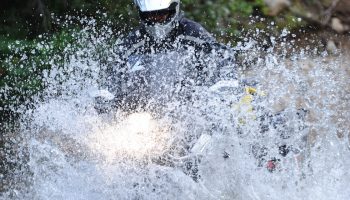By Ron Lieback
Want to ride safer and faster during those street portions of your adventure rides? Check out these seven sportbike riding tips adapted for bigger ADV bikes.
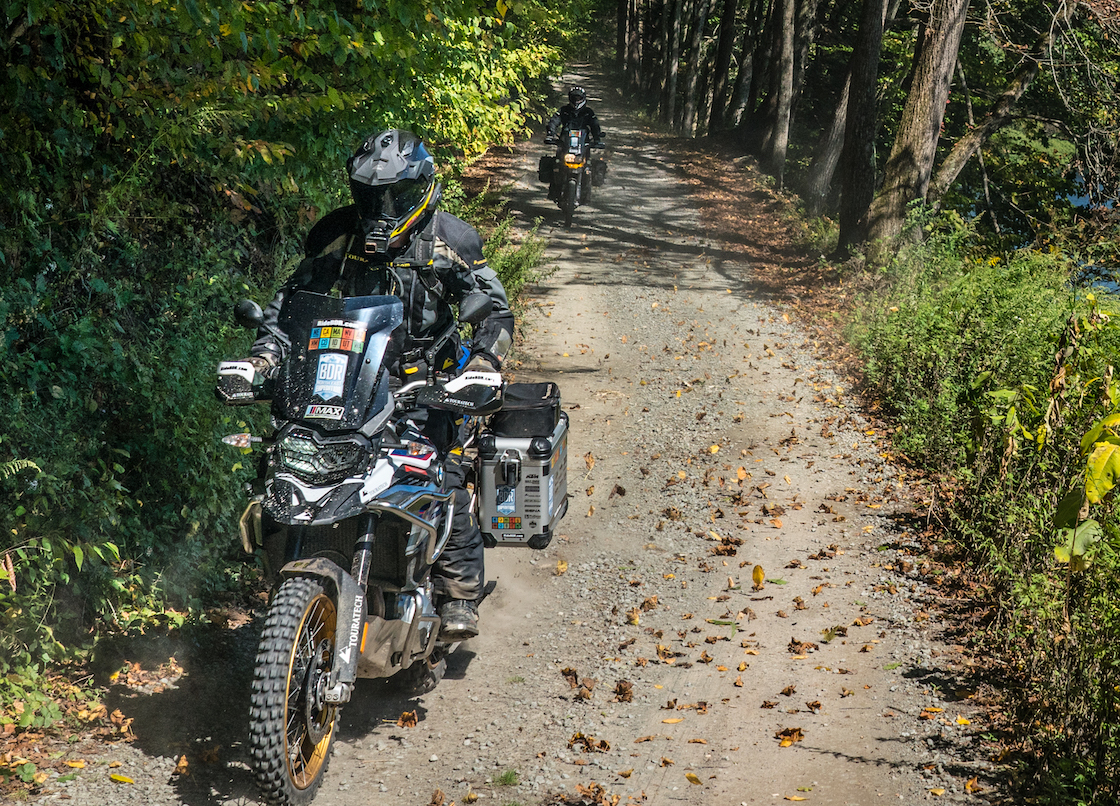
Adventure bikes didn’t interest me until 2010. Until then, I spent most of my moto life riding sportbikes and training/testing on road-racing circuits.
Due to my past, transitioning into the ADV world arrived with multiple challenges.
Two initially stick out—retraining a mindset that only focused on road-racing techniques and the psychological challenge of riding larger ADV bikes off-road. Then came the challenge of swapping between the on- and off-road techniques without a conscious effort.
While already into my 30s, I skipped the usual learning on a smaller off-road bike. Instead, I went big—and super heavy—with a 2002 Suzuki V-Strom DL1000. This bike’s design catered to comfortable upright touring with a few gravel roads here and there. This to me was the perfect platform to truly build skill upon as I tested the ADV scene out, seeing if it was a good fit for my passion-driven moto lifestyle. If not, I thought it’d make a good plow or snow bike.
After my first tour, which included many fire roads, I was more than obsessed. I modded the V-Strom heavily, and after a two years of disciplined self-training through books and videos and classes with the RawHyde Adventures and Jimmy Lewis, I could comfortably take the Strom off the road without worry.
I still have the same love for sportbikes, though, so my current training involves practicing both on- and off-road techniques to ride bigger adventure bikes safer and faster. Nowadays, my ride is the KTM 1190 Adventure R, which to me is the best outright big ADV available.
Most ADV riders I encounter, whether on a new local group ride or big adventure rally, arrive from an off-road background. And when we’re ripping country asphalt, questions surface about my on-road riding style on the bigger adventure touring bike.
The following are the first techniques I discuss, each arriving from the world of sportbikes and road racing.
A quick note: These techniques are best for bigger adventure bikes (BMW R 1250 GS, KTM 1290 Adventure, Triumph Tiger 1200, etc.) shod with at least 50/50 (50 percent on-road, 50 percent off-road) or more street-oriented adventure motorcycle tires. These modern ADV tires offer more traction and feel on-road than a full-out sport tire did 20 years ago. Adventure-motorcycle tire technology improves yearly, allowing riders like me who crave ultimate confidence on and off the road to push the limits further.
I’ve spent the past two years testing multiple 50/50 tires, from the Continential TKC80 to the Bridgestone AX41 to Pirelli Scorpion Rallye STR to the Dunlop Trailmax Mission, and continue to question how they are so good at sportbike speeds and, after taking out a few PSI, super-capable off-road.
With that note aside, the following are some simple strategies borrowed from the sportbike/road-racing world that will help you ride faster on the asphalt and safer.
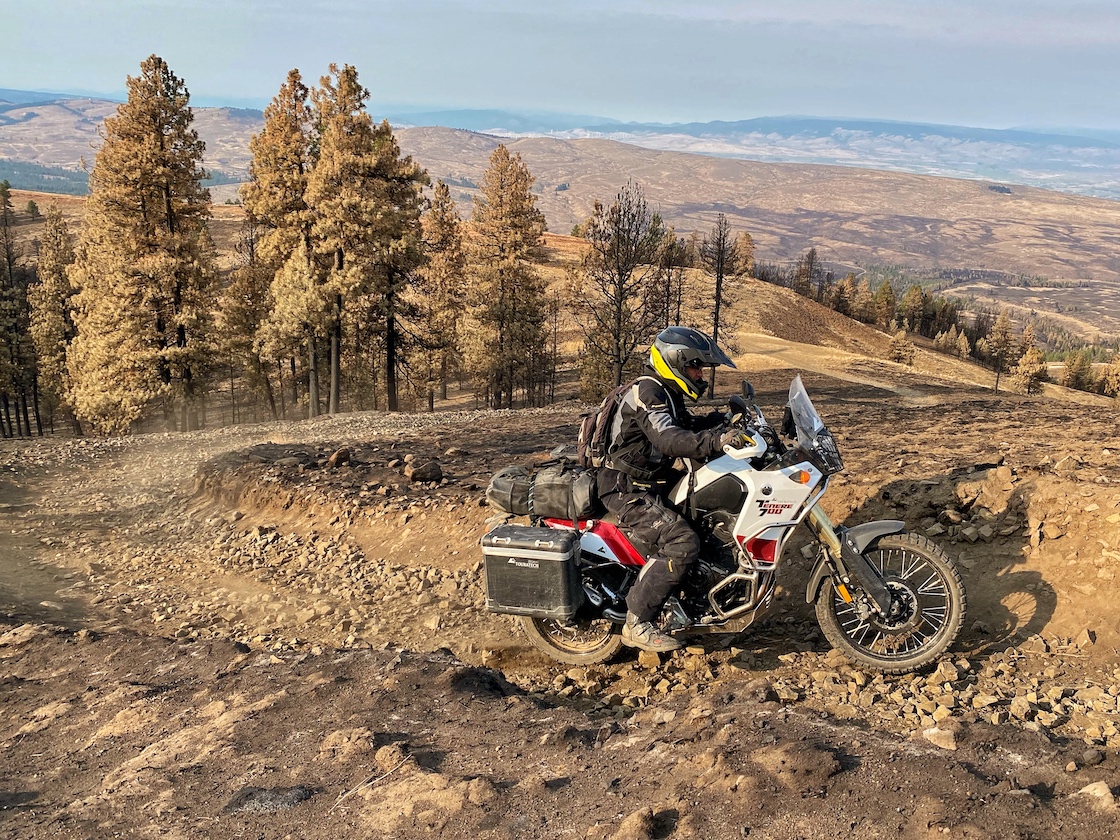
1. Seating Position
Optimal body position, or BP, begins with the optimal seating position for road riding. Most off-road riders learn to sit close to the gas tank due to the bike’s design, but this position can harm your sport-focused on-road performance for bigger adventure bikes.
The goal is to have a comfortable position that assists with the finesse of your hand controls—throttle, front brake, clutch, and pushing/pulling handlebar inputs.
The ideal position? Not too far from the gas tank and not too far away—say about an inch or two, although every rider’s preference will differ based on arm and torso length. While wearing riding gloves, I put all my fingers together, press my thumb against my middle, and ring fingers as an Italian would say when saying “delizioso” about food. Then I stick that between the tank and myself. This distance has worked over and over on numerous motorcycles, from my 1190 R to my Multistrada to dozens of sportbikes I’ve tested throughout the years.
Never be glued to the tank or sitting too far back; it won’t allow you to move across the seat while transitioning weight, and it will create unsmooth inputs to your controls.
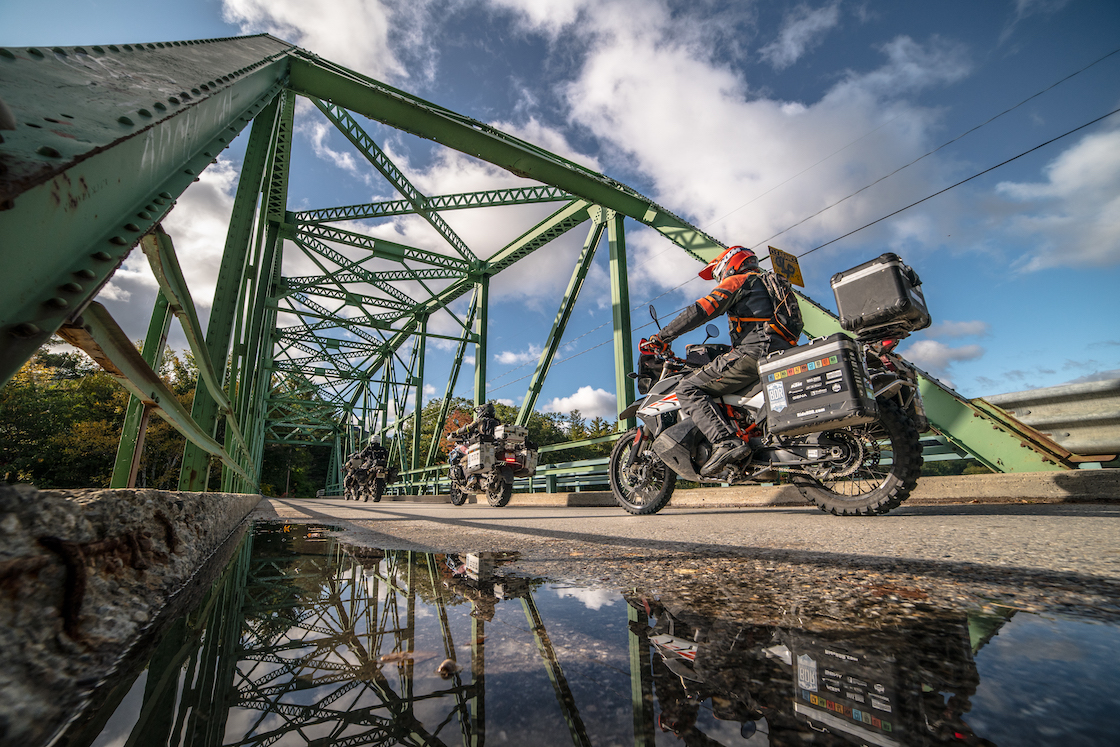
2. Proper Finger and Feet Positioning
The next thing to tweak is your fingers and feet’ positions. This is a natural practice for many dual-sport riders, so I won’t’ waste much time here.
Two fingers on the brake allow more than enough power to brake hard, but also finely tune braking inputs during trail braking and throttle maintenance (discussed more below), and when blipping the throttle under braking to rev-match your engine rpm to the speed, so you don’t lock up the rear tire (yes—auto-blippers are typical on many modern ADV bikes, but I will also match-rev my throttle inputs to speed).
I also use only two fingers on the clutch, which helps with slipping the clutch off-road in slow maneuvers and downshifting while blipping the throttle during on-road situations.
The same goes for the feet—many enduro riders stand on the pegs using the balls of their feet (just behind the toes) but fail to do so while sitting. Keep the balls of your feet on the pegs during road riding, which allows you to smoothly transition from side to side and slide across the seat while weighing the inside peg (more below). This also keeps your toes from whacking the pavement in sharp corners, which can upset your chassis and startle you, prompting a crash.
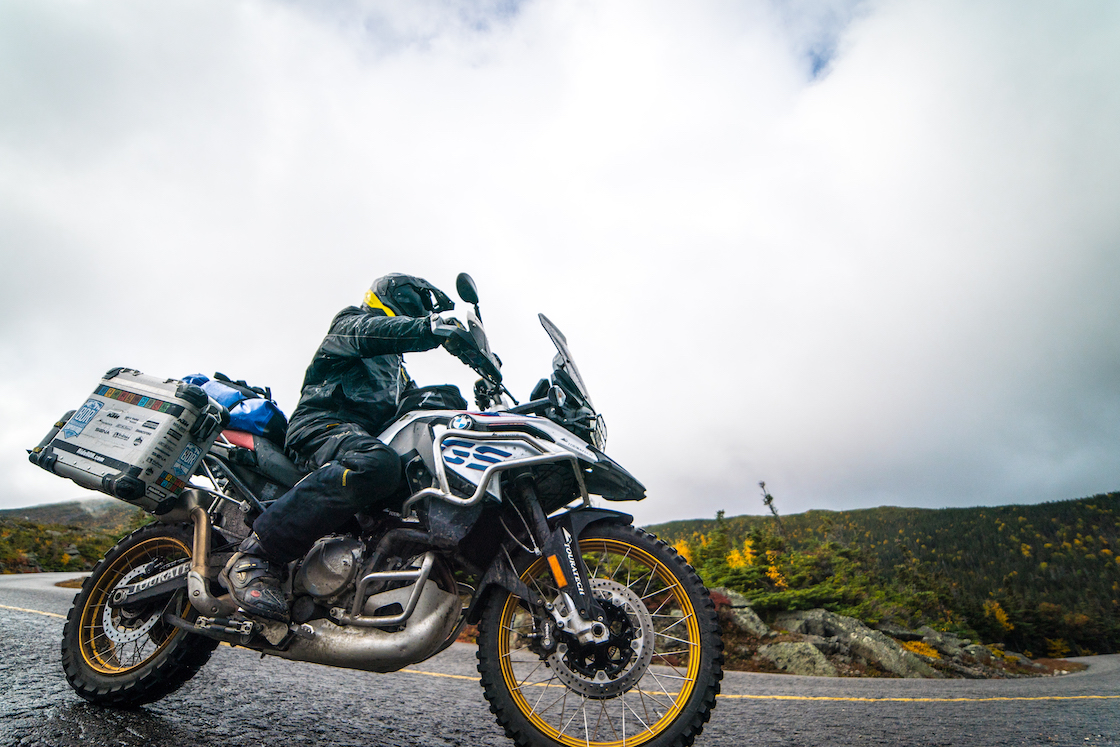
3. More Body Position, Less Lean Angle
Speaking about moving across the seat, this is where one of the largest discrepancies arrives when riding on the street versus the dirt. We keep our body upright on an enduro and lean the bike into the turns, allowing the knobbies to bite into the loose dirt/gravel/sand for tracking.
But on the street, we want to keep the bike as upright as possible and move our weight into the corner. This keeps the tire wider and provides more traction on the asphalt.
When heading into a corner, you first want to look where you’re going, keeping your head “in the mirror” or moving off the bike’s center and into the direction you’re going. You then slide your butt a bit off the seat into the direction of the turn and weigh the inside peg (the one going into the turn). This is the total opposite of riding in the dirt, where you want to weigh the outside peg to retain the most traction as you allow the knobbies to bite into the loose ground.
Due to the modern tires and the amazing modern adventure touring chassis setups, you don’t have to lean off MotoGP-style. Just enough to help keep as much rubber on the asphalt as possible—even if only an inch or so to the left or right. Too much leaning input not only looks dumb, but it can upset your chassis quicker, causing you the crash.
Remember this in wet conditions, especially. Proper body position can save from crashing.
Again, the more rubber on the ground, the better. And the modern 50/50 tire designs keep you planted.
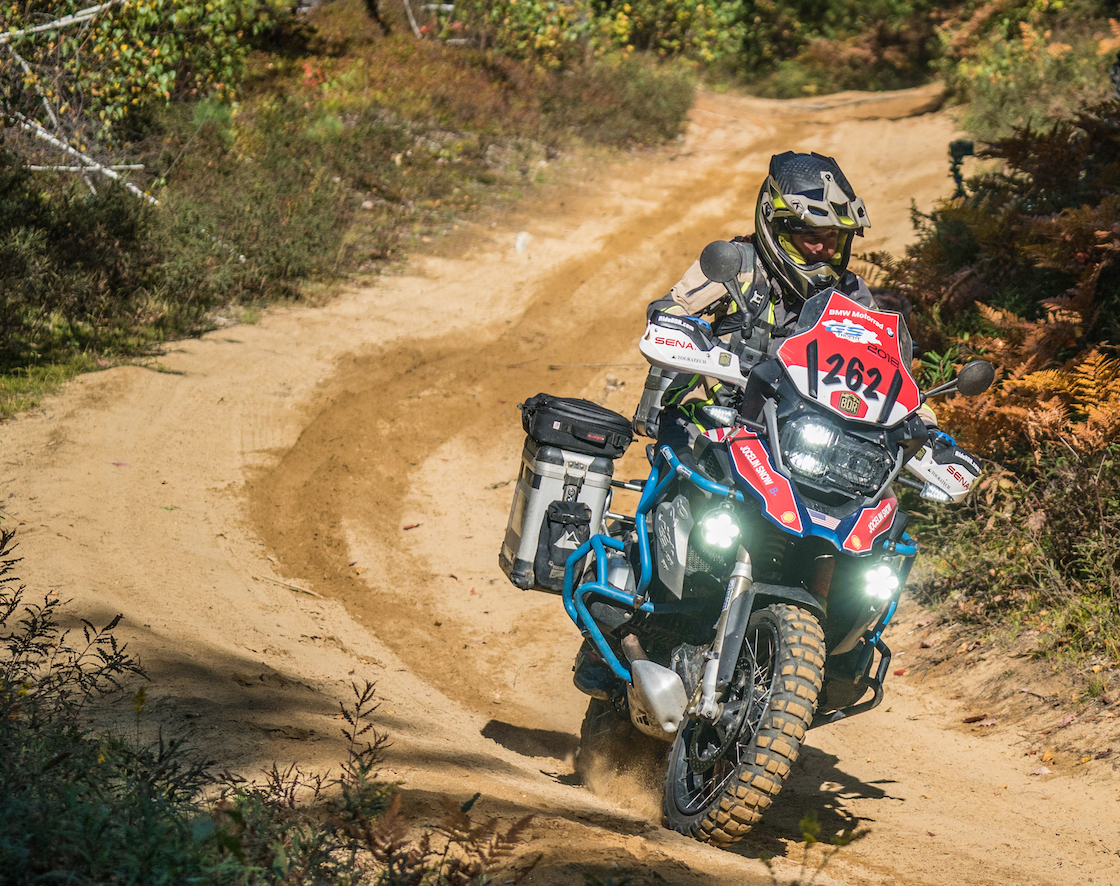
4. Trail Braking
This is a concept that can again save your life while making your ride much faster and smoother.
Trail braking simply means trailing off the brakes as your bike slows, leans, and turns through a corner. To slow your ADV machine, you do most of your hard braking while the bike is upright, and there’s a much larger tire contact patch. As you start leaning and turning, you gradually “trail” the brakes, reducing pressure as you corner and the lean angle becomes stronger.
I tend to trail brake until I reach the apex of a corner, and from there, I get off the brake completely and start smoothly rolling on the throttle to WOT if needed (or warranted).
This is where throttle maintenance comes into play, also. When reducing lean and steering inputs, you want to gradually roll your throttle on until enough contact patch is big enough to crank on the throttle more. If you give too much input, you’ll lose traction and high-side—something no ADV rider wants.
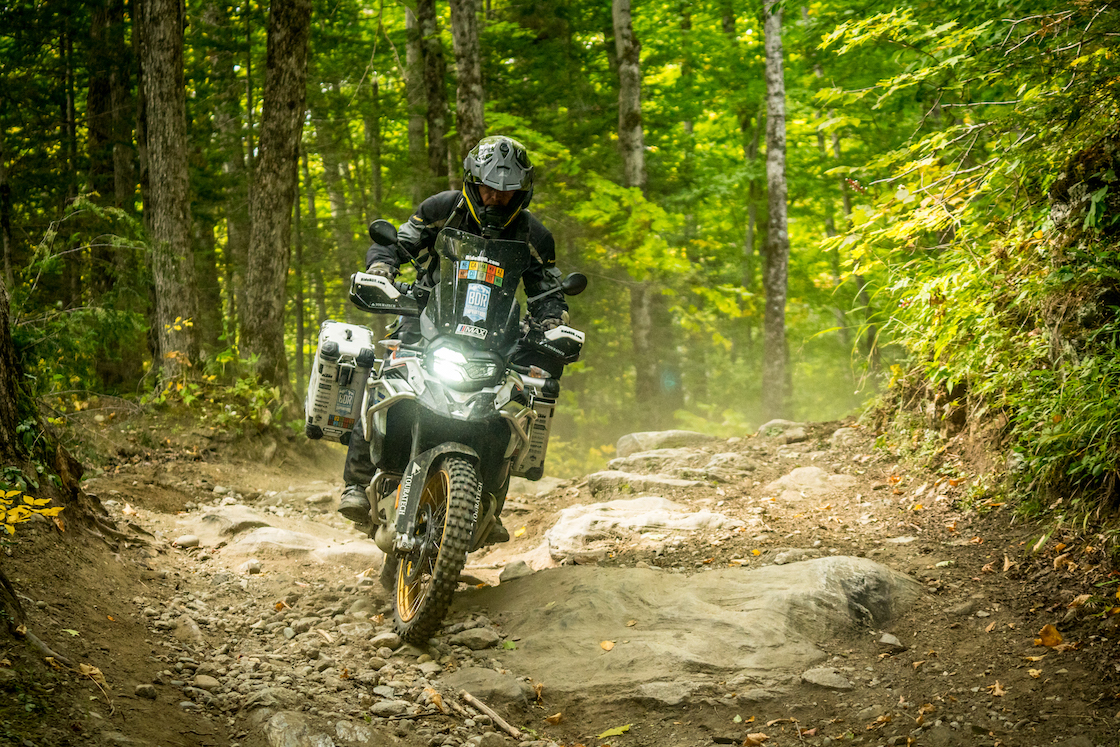
5. Throttle Maintenance and Braking Inputs
For ultimate speed and control of the bike, the goal is NEVER to have any idle time—you’re either on the throttle for maintenance or speed or on the brakes. When no inputs are provided, you have no control, which is when crashes happen. You always want control over what your suspension and drive train are doing.
Here’s a quick breakdown:
- On the front brake: The front tire is loaded, and suspension is compressed, giving you firm control of the asphalt and more traction.
- On the throttle: rear suspension is loaded, rear tire contact is larger, and there’s less control of the steering inputs because the front suspension is unloaded and the front end lighter, reducing tire traction.
- Maintenance throttle: this keeps the chain tight and the suspension from diving forward or unloading, providing optimal traction in front and rear.
- On the rear brake: The rear tire and suspension loads, providing additional traction out back. Light use of the rear brake can be a lifesaver, especially when you’re carrying too much speed in a corner and are going wide, about to go over the double yellow or centerline. Lightly using the rear brake—with finesse—can tighten your line while maintenance throttle is in use. \
On the topic of brakes, many sportbike newbies only use a front brake, rarely touching the rear brake. This is wrong. For emergency stops, just as in the dirt, using both front and rear brakes will help you stop MUCH quicker. The same is for the street.
And optimizing your rear brake use can help in multiple ways. It can help slow easily; keep the suspension even when stopping (passengers love this because there’s no dive!), and help tighten a line on the street or scrub speed, as I explained above. This is a great technique to keep you safe and fast while traveling in Europe, where the decreasing radius and tight turns are encountered often.
Also, when having to emergency brake, always use both brakes. This is why the best ADV riders practice technique often both on and off the road. Different inputs are needed for both riding situations, so know your ability and your bike’s ability well by practicing constantly.
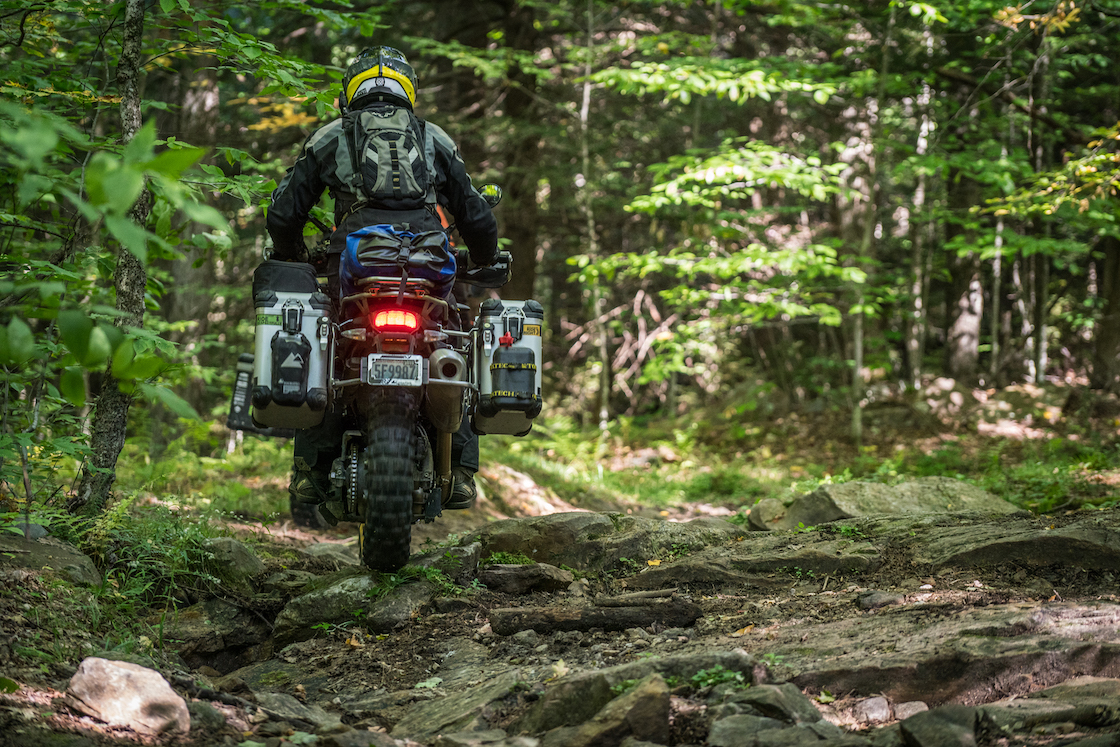
6. Wide, Deep, and Late
I learned this technique at Aaron Stevenson’s Cornerspeed school in the early 2000s. If you want to be quick and safe when encountering the numerous blind corners in real-world riding, remember three words when cornering: Wide, Deep, and Late.
The concept is simple and preps you for any dangers that may be present on the road. For example, if you’re heading into a blind right corner with some speed, make your line wider and deeper by riding closer to the centerline, then turn later when you have the clearest vision of what’s ahead.
This simple practice allows you to see first, then choose a different line if something is obstructing the roadway or a car is coming over the yellow line.
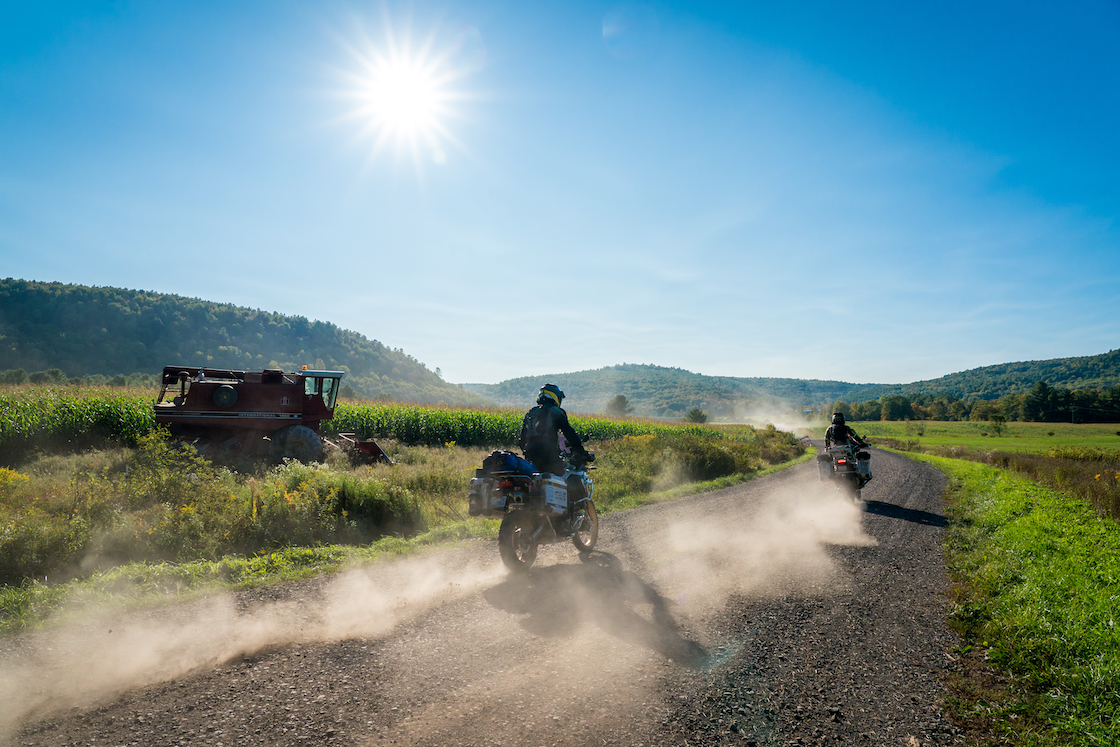
7. Look Further Ahead and Scan More
Due to the typical slower speeds on the trails, looking far ahead becomes natural. But on the street, when speeds are cranking, you should learn to look even farther ahead.
The farther you look, the larger the picture, and the more things in front of you slow down. This allows you to see threats—oncoming cars, potholes, something on the road like slick spots or animals—sooner and have more time to react. This also allows you to notice opportunities like giving more throttle input or setting some imaginary braking markers as a turn approaches, which keeps you safer and faster.
Besides looking farther ahead due to increased speed, you should also learn to scan your eyes more often. Not drastically, but smoothly, searching wider side-to-side to notice any threats and have enough time to use the proper input of controls.
Looking farther ahead and scanning more is all about being a more proactive rider. And a proactive rider is a much safer rider than one who needs to react quickly to an unknown circumstance that can send you sailing.
For many big-bike adventure riders who come from a dirt background, mastering safety and speed off-road becomes an obsession. Many also want to master this on the road but quickly realize after a few “oh-shit” moments—or crashes—that those off-road techniques don’t work on the street.
But with some practice of the above techniques, riders can build the optimal skills needed to pilot their adventure bikes safer and faster on the asphalt. The only next step is to have the mindset to switch between both skillsets when required, which will take additional time on the bike, practicing both on and off the road. That equates to rider more, something passionate riders never complain about.
